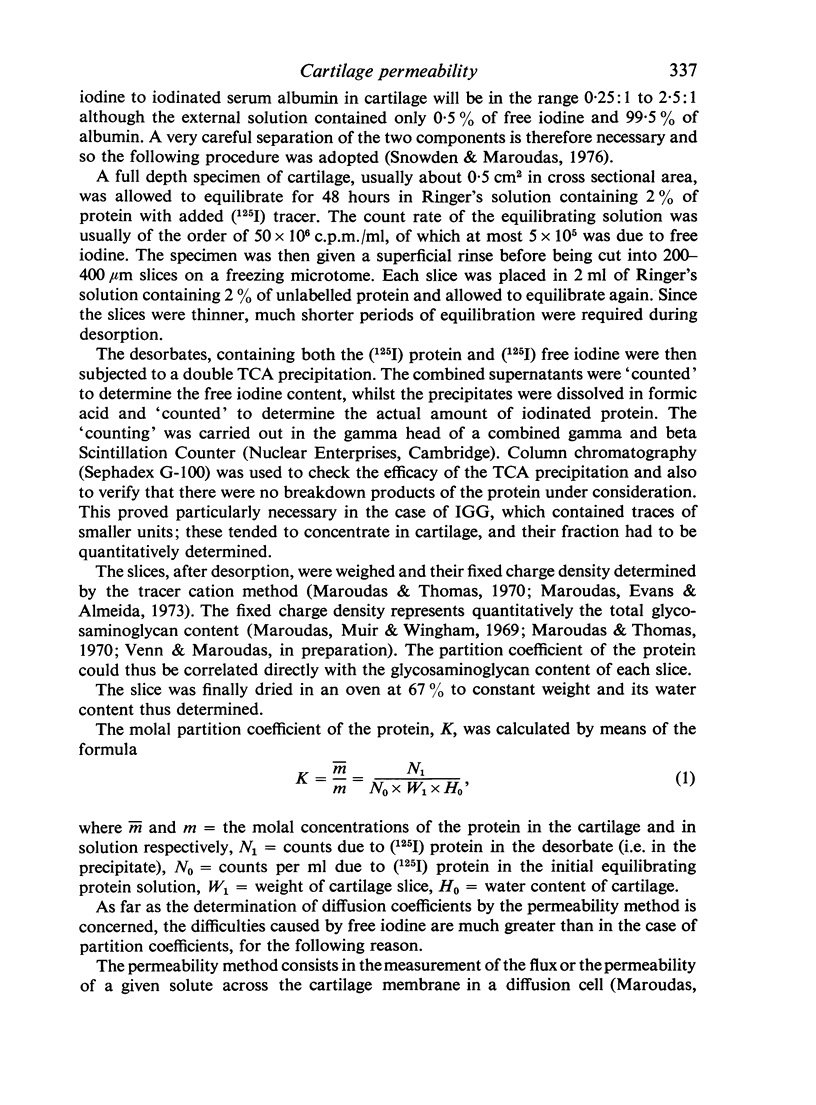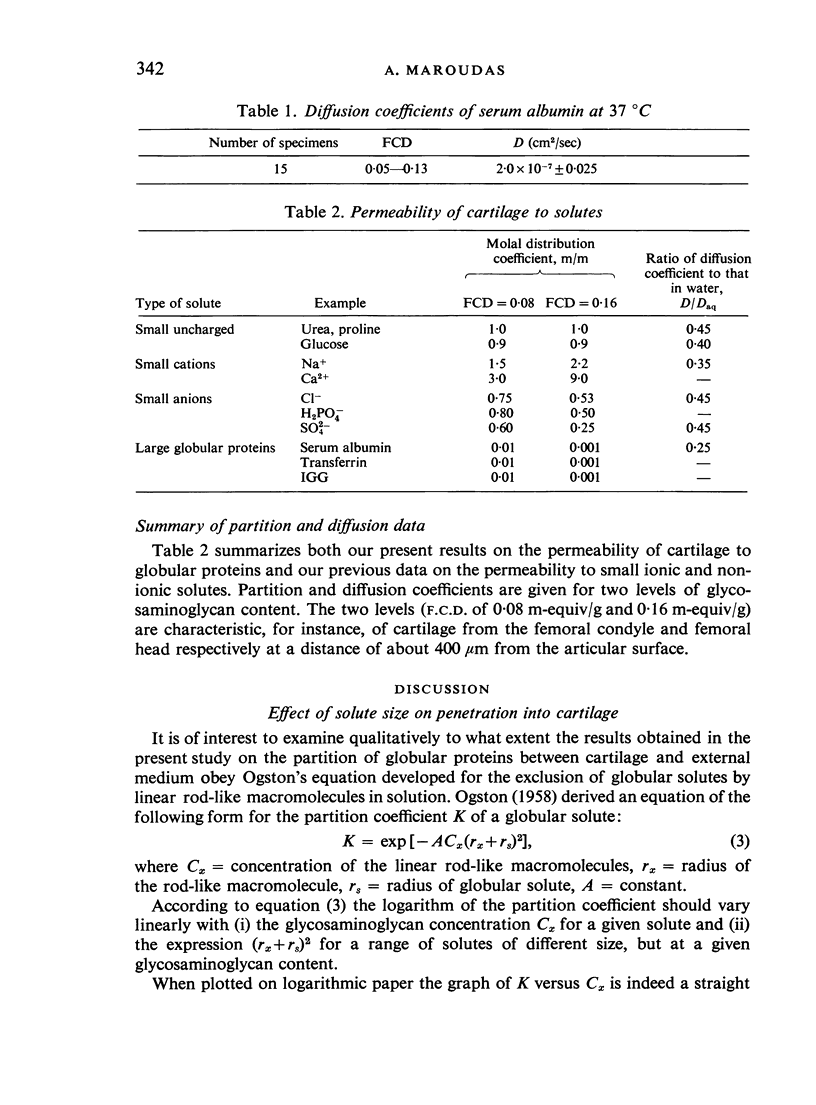Abstract
A review of the transport of solutes through articular cartilage is given, with special reference to the effect of variations in matrix composition. Some physiological implications of our findings are discussed. Also, results of an experimental study of the permeability of articular cartilage to large globular proteins are presented. Because of the very low partition coefficients of large solutes between cartilage and an external solution new experimental techniques had to be devised, particularly for the study of diffusion. The partition coefficients of solutes were found to decrease very steeply with increase in size, up to serum albumin. There was, however, no further decrease for IGG. The diffusion coefficient of serum albumin in cartilage was relatively high (one quarter of the value in aqueous solution). These two facts taken together suggest that there may be a very small fraction of relatively large pores in cartilage through which the transport of large molecules is taking place. The permeability of cartilage to large molecules is extremely sensitive to variations in the glycosaminoglycan content: for a threefold increase in the latter there is a hundredfold decrease in the partition coefficient. For cartilage of fixed charge density around 0-19 m-equiv/g, there is no penetration at all of globular proteins of size equal to or larger than serum albumin.
Full text
PDF












Selected References
These references are in PubMed. This may not be the complete list of references from this article.
- Maroudas A. Distribution and diffusion of solutes in articular cartilage. Biophys J. 1970 May;10(5):365–379. doi: 10.1016/S0006-3495(70)86307-X. [DOI] [PMC free article] [PubMed] [Google Scholar]
- Maroudas A., Evans H., Almeida L. Cartilage of the hip joint. Topographical variation of glycosaminoglycan content in normal and fibrillated tissue. Ann Rheum Dis. 1973 Jan;32(1):1–9. doi: 10.1136/ard.32.1.1. [DOI] [PMC free article] [PubMed] [Google Scholar]
- Maroudas A. Glycosaminoglycan turn-over in articular cartilage. Philos Trans R Soc Lond B Biol Sci. 1975 Jul 17;271(912):293–313. doi: 10.1098/rstb.1975.0054. [DOI] [PubMed] [Google Scholar]
- Maroudas A., Muir H., Wingham J. The correlation of fixed negative charge with glycosaminoglycan content of human articular cartilage. Biochim Biophys Acta. 1969 May 6;177(3):492–500. doi: 10.1016/0304-4165(69)90311-0. [DOI] [PubMed] [Google Scholar]
- Maroudas A. Physicochemical properties of cartilage in the light of ion exchange theory. Biophys J. 1968 May;8(5):575–595. doi: 10.1016/S0006-3495(68)86509-9. [DOI] [PMC free article] [PubMed] [Google Scholar]
- Maroudas A., Thomas H. A simple physicochemical micromethod for determining fixed anionic groups in connective tissue. Biochim Biophys Acta. 1970 Jul 21;215(1):214–216. [PubMed] [Google Scholar]
- Stockwell R. A. The cell density of human articular and costal cartilage. J Anat. 1967 Sep;101(Pt 4):753–763. [PMC free article] [PubMed] [Google Scholar]


